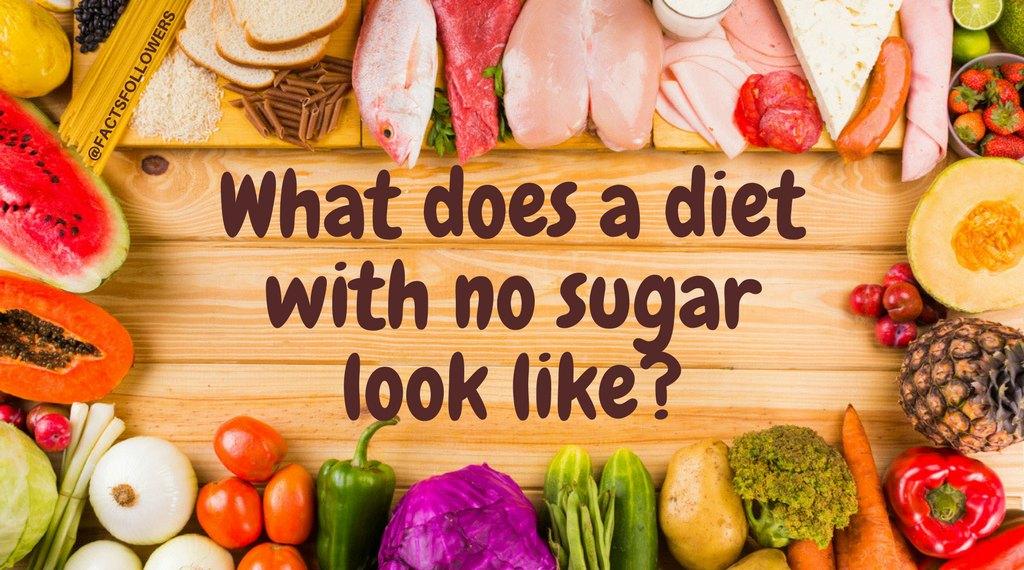Your Location:Home - Hot Topics > - Content
News and Information
Goodbye Sugar: A Diet With No Sugar?
Time:2017-04-01 14:49:42
Source:IFIC

Ever heard someone say they don’t consume sugar? Not that they don’t consume added sugars, but that they don’t eat any sugars? I have, and to be honest, it really makes no sense. Considering that sugars are naturally found in so many foods, how can they possibly eat a diet with absolutely none? In fact, I’m not even sure there are any foods that don’t contain natural sugars, but honestly, I’m not sure. So I decided to dig a little further.
What does a diet with no sugar look like?
First things first, let’s remove what we first think of when we think of natural sugars. This will include fruits; syrups, like honey and maples syrup; and whole grains and refined grains, such as oatmeal, quinoa, whole wheat, and bread. What else would I be missing if I take these foods out of the diet? Well, a lot, since fruits and whole and refined grains are nutrient-rich. Many of these foods contain essential nutrients that many of us don’t get enough of, like potassium, dietary fiber, vitamin C, and folate (folic acid).
What do these nutrients do for you? Glad you asked. Whole grain foods contain B vitamins, which support cellular development, improve the immune system, and may help increase energy levels. Vitamin A and C support eye and immune health, respectively. And both fruits and whole grain foods can provide fiber, which is associated with a decreased risk of heart disease and some cancers.
Oh, and since we’re talking about fruits, let’s discuss another whole food—nuts. Nuts contain naturally-occurring sugars too, so goodbye peanuts, almonds, hazelnuts, walnuts, and other nuts that provide healthful mono- and polyunsaturated fats, such as omega 3, 6, and 9.
Lactose, a type of sugar found in dairy, will also get the ax. No more milk in my coffee, cheese on my eggs, and a yogurt bowl for breakfast. But with this goes important sources of protein, and a source of calcium, which is a vital mineral that supports bone health. Oh, and without yogurt, I’ll have to find another fermented source of gut-healthy probiotics.
With the better part of three food groups now off limits (dairy, grains, and fruits), we turn to the remaining two for options…but with contingencies. Vegetables—did you know that not all vegetables are sugar-free? In fact, many vegetables contain naturally-occurring sugars, like root vegetables, such as rutabaga and beets; buckwheat, which includes rhubarb; and gourds, like pumpkin, butternut squash, and zucchini. Sadly, these nutritious foods will have to go, too.
So, we are left with only animal-based proteins and some vegetables…and the only reason any vegetables are left is because I gave a pass to those with less than 1 gram of sugar. If I didn’t, I could only consume animal-based proteins, like chicken, beef, shrimp, etc.
What do these nutrients do for you? Glad you asked. Whole grain foods contain B vitamins, which support cellular development, improve the immune system, and may help increase energy levels. Vitamin A and C support eye and immune health, respectively. And both fruits and whole grain foods can provide fiber, which is associated with a decreased risk of heart disease and some cancers.
Oh, and since we’re talking about fruits, let’s discuss another whole food—nuts. Nuts contain naturally-occurring sugars too, so goodbye peanuts, almonds, hazelnuts, walnuts, and other nuts that provide healthful mono- and polyunsaturated fats, such as omega 3, 6, and 9.
Lactose, a type of sugar found in dairy, will also get the ax. No more milk in my coffee, cheese on my eggs, and a yogurt bowl for breakfast. But with this goes important sources of protein, and a source of calcium, which is a vital mineral that supports bone health. Oh, and without yogurt, I’ll have to find another fermented source of gut-healthy probiotics.
With the better part of three food groups now off limits (dairy, grains, and fruits), we turn to the remaining two for options…but with contingencies. Vegetables—did you know that not all vegetables are sugar-free? In fact, many vegetables contain naturally-occurring sugars, like root vegetables, such as rutabaga and beets; buckwheat, which includes rhubarb; and gourds, like pumpkin, butternut squash, and zucchini. Sadly, these nutritious foods will have to go, too.
So, we are left with only animal-based proteins and some vegetables…and the only reason any vegetables are left is because I gave a pass to those with less than 1 gram of sugar. If I didn’t, I could only consume animal-based proteins, like chicken, beef, shrimp, etc.
A healthy and balanced diet with no sugar just isn’t possible
There are two things to take away from all of this. The first is that many people probably don’t know how many foods naturally contain sugars. Most foods that make up a healthy eating pattern contain naturally-occurring sugars. Second, removing foods with sugars from the diet can make it potentially dangerous due to the lack of vital nutrients, but it would be dangerously boring as well. The reality is there’s no reason to remove foods from your diet just because they naturally contain sugar. After all, these foods contain more than just sugars but have vital nutrients like protein, healthy fats, vitamins, minerals, and other healthful components like antioxidants and probiotics.
So the next time you hear someone claiming they no longer eat “sugar,” ask them to clarify if they mean natural or added sugar. It seems minor, but there’s a major difference to a food nerd like me.
So the next time you hear someone claiming they no longer eat “sugar,” ask them to clarify if they mean natural or added sugar. It seems minor, but there’s a major difference to a food nerd like me.



